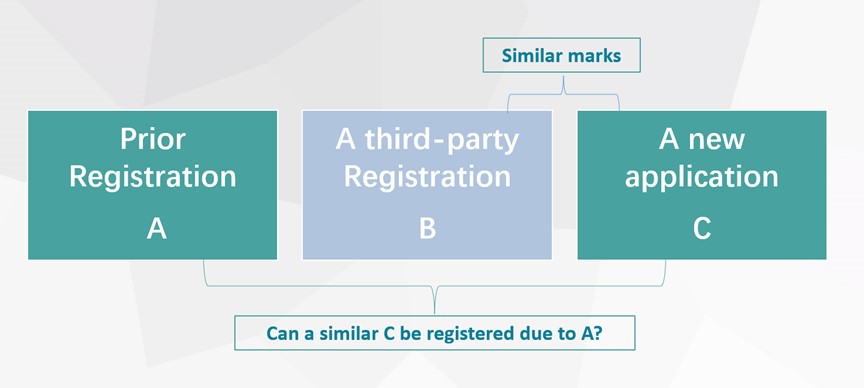China Trademark: Continuity in Trademark Registration
Trademark Continuity Registration addresses whether a trademark registration A can influence the registration of a new, similar trademark C if C is rejected due to a third party’s similar registration B. Specifically, it considers whether registration A can support the registration of C, especially if A has gained reputation through use.

The concept of Trademark Continuity Registration appears in judicial documents and can be useful for resolving certain legal issues. However, it has often been misunderstood and misapplied in practice. In the past, many cases were decided based on this concept.
China is not a case-law country, but lower courts follow precedents set by the Supreme People's Court. In several landmark cases, the Supreme People's Court has emphasized that:
1. The reputation of a trademark registration can be transferred and maintained, but it does not provide a legal basis for registering a new trademark.
2. There is no legal foundation for Trademark Continuity Registration.
3. Trademark renewal is the sole legal method to maintain a trademark registration.
4. Each new trademark application will be evaluated individually.
Whether dealing with trademark registration or disputes, keep in mind that arguments based on Trademark Continuity Registration are generally untenable. The key principles for determining whether a mark can be registered are:
1. Likelihood of trademark confusion.
2. Bad faith, which influences the assessment of trademark confusion.
China Trademark-Ex officio rejections for trademark applications based on “no intention to use” and “bad faith” (“Article 4 rejection”)
Many companies face ex officio rejections from the Trademark Office if they submit a large number of trademark applications in a batch or within a short timeframe.
Such rejections occur because China is rigorously tackling bad-faith trademark registrations and trademark hoarding. As a first-to-file country, the Trademark Office cannot immediately identify bad-faith applications at the filing stage. To prevent such marks from entering the system, the office demands evidence of use for applications deemed suspicious early in the process.
To address these rejections, applicants must provide evidence of use or intent to use to show that the marks are not filed in bad faith and will be actively used.
Currently, there are no whitelist or blacklist systems, nor any preferential treatment for domestic versus foreign applicants. As a result, applicants may receive repeated rejections. Additionally, the criteria for triggering these rejections are not publicly disclosed, leaving the decision to the discretion of the Trademark Office. Even if a standard were established, bad-faith applicants might still find ways to circumvent it.
Dealing with repeated rejections is a significant challenge for applicants. Until the Trademark Office develops a more precise system, applicants can mitigate risks and impacts by considering the following factors in their filing strategy:
One: Is the application intended for actual use? If so, it's wise to gather evidence of use or intent to use beforehand to better handle potential rejections.
Two: Can the pace of filing applications be managed? Large companies often file numerous trademarks in batches or over short periods. If commercially viable, applicants might prioritize key marks first and then file related or secondary marks gradually.
A key question is how to balance the need for defensive applications with the requirements of Article 4.
Bad faith trademark registrations are widespread, leading trademark owners to file additional applications for defensive purposes. Some believe these defensive applications should be exempt from Article 4 rejections due to the need for self-protection, but current practice shows otherwise.
Article 4 rejections have both advantages and drawbacks and will undoubtedly evolve with changes in Chinese trademark law and practice.


